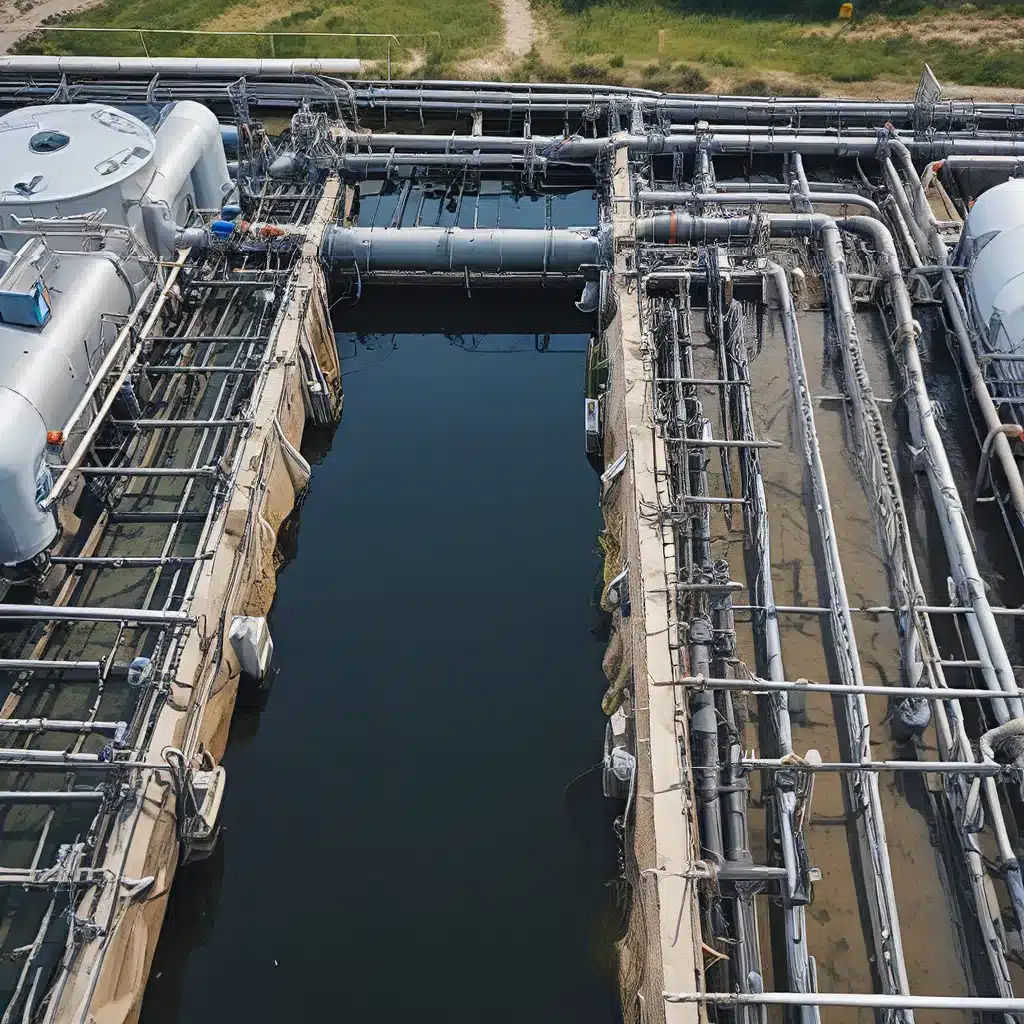
In the bustling world of water treatment and environmental services, a digital revolution is quietly sweeping through the industry. No longer content to rely solely on traditional methods, water management professionals are embracing the power of cutting-edge technologies like the Internet of Things (IoT) and Artificial Intelligence (AI) to revolutionize their operations.
It’s a fascinating transformation to witness, and I can’t wait to dive in and explore how this digital wave is reshaping the landscape of wastewater treatment. After all, the way we manage our most precious resource – water – will have far-reaching implications for the health of our communities and the sustainability of our planet.
Wastewater Treatment: The Digital Transformation
Not long ago, the world of wastewater treatment was a decidedly analog affair. Operators would dutifully monitor gauges, make manual adjustments, and rely on their years of experience to keep the system running. But as water treatment facilities face growing demands, tighter regulations, and the need for greater efficiency, the industry has quickly realized that it’s time to embrace the digital age.
Enter IoT and AI – two technologies that are poised to transform the way we approach wastewater management. By deploying a network of interconnected sensors and smart devices, water treatment plants can now gather real-time data from every corner of their operations. And with the power of AI-driven analytics, they can make sense of all that information, uncover hidden patterns, and make data-driven decisions that optimize performance.
ExxonMobil, for example, has been at the forefront of leveraging digital technologies to enhance its operations, including in the water treatment space. By harnessing the power of data and analytics, the company has been able to “improve decision-making, increase efficiency, and reduce costs” across its facilities.
Unlocking the Potential of IoT and AI
When it comes to wastewater treatment, the potential of IoT and AI is truly boundless. Let’s take a closer look at how these technologies are transforming the industry:
Predictive Maintenance
One of the most exciting applications of IoT and AI in wastewater treatment is predictive maintenance. By equipping critical equipment with sensors, operators can continuously monitor performance and detect early warning signs of potential issues. “The data intelligence offered by the combined solution will enable public and private sector clients to perform predictive maintenance by detecting events in the distribution network before they occur, identify the source of the events, and take action to proactively resolve issues,” explains Prakash Govindan, COO of Gradiant.
Instead of waiting for a piece of equipment to break down and disrupt operations, plant managers can now use AI algorithms to predict when maintenance will be needed. This allows them to schedule repairs and replacements during planned downtime, minimizing disruptions and maximizing efficiency.
Optimizing Operations
Beyond just monitoring equipment, IoT and AI are also helping water treatment facilities optimize their overall operations. By gathering data from sensors across the plant – from flow rates and chemical levels to energy consumption and water quality – AI-powered analytics can identify opportunities for optimization.
“Gradiant’s SmartOps digital AI solution, an integrated platform for plant performance optimization and asset management, improves the efficiency and productivity of facilities by identifying areas needing attention and proactively predicting the likelihood of future events,” Govindan notes.
This data-driven approach enables operators to make more informed decisions, fine-tune processes, and ensure they are meeting regulatory requirements while maximizing resource efficiency.
Enhancing Sustainability
With growing concerns over water scarcity and environmental impact, sustainability has become a top priority for water treatment facilities. And here, too, IoT and AI are proving to be invaluable tools.
By closely monitoring water usage, energy consumption, and waste output, AI algorithms can help identify opportunities to reduce the plant’s environmental footprint. This might involve optimizing chemical dosing, adjusting energy-intensive processes, or finding innovative ways to recycle and reuse wastewater.
As one industry expert points out, “Digital technologies can help water utilities become more efficient, sustainable, and resilient, ultimately improving the quality of life for communities.”
Overcoming Challenges and Embracing the Future
Of course, as with any transformative technology, the adoption of IoT and AI in wastewater treatment hasn’t been without its challenges. Concerns around data security, infrastructure compatibility, and workforce upskilling have all posed obstacles for water management professionals.
But the industry is rising to meet these challenges head-on. “We are committed to delivering AI-powered automation, predictive maintenance, and operations optimization using machine learning algorithms and data analytics in a complete and integrated platform that no one else can offer,” Govindan asserts.
And as the technology continues to evolve and the benefits become increasingly clear, more and more water treatment facilities are embracing the digital revolution. In fact, Gradiant has recently partnered with SpaceAge Labs to deliver a comprehensive, AI-powered solution for total water infrastructure management.
As I look to the future, I can’t help but feel a sense of excitement and optimism. The integration of IoT and AI into wastewater treatment is not just a technological advancement – it’s a fundamental shift in the way we approach one of our most essential resources. By harnessing the power of data and analytics, we can ensure that our water treatment systems are more efficient, sustainable, and resilient than ever before.
So, if you’ll excuse me, I think I’ll head over to Inland Waters Inc. and see what the future of wastewater treatment has in store. After all, the digital revolution is just getting started, and I can’t wait to see what it has in store for us next.


